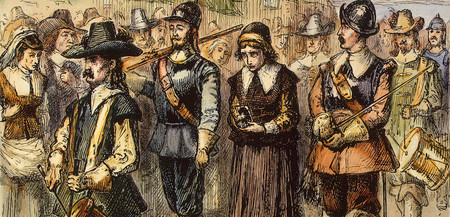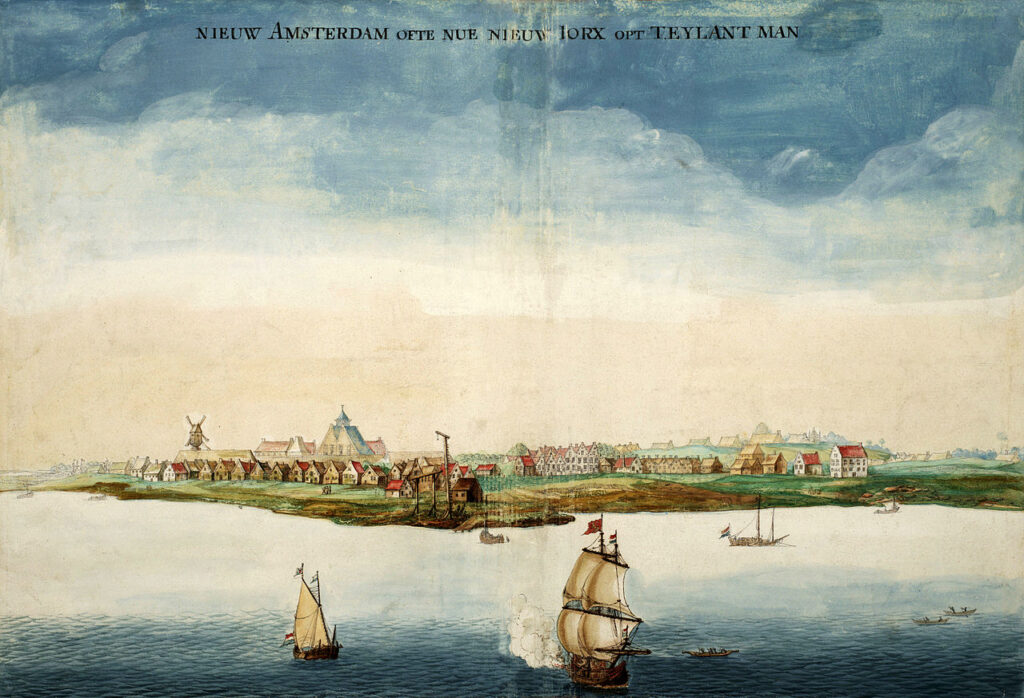
The Middle Colonies
The Middle Colonies
The Middle Colonies—New York, New Jersey, and Pennsylvania—more than any other portion of colonial America, would anticipate what the United States would become. The Middle Colonies were truly multicultural societies.

New Amsterdam, which would become New York City, was unique in its diversity, dynamism, and density. From its founding as a commercial outpost, it was always a place of energy, aspiration, and transformation. Even at its start, it was an ethnic melting pot. In 1643, New Amsterdam had only about 500 inhabitants, but they spoke eighteen different languages. Its population included not only Dutch, but Africans, English, French, Germans, Jews, and Scandinavians.
Yet the economies of New Amsterdam and, later, New York City rested on slavery. Enslaved Africans cleared land, cut timber, constructed roads, and even built the wall for which Wall Street is named. Under English rule, black New Yorkers worked at virtually every job from raising livestock in the rural countryside to such urban skills as carpentry, shoemaking, blacksmithing, stonework, butchering, milling, weaving, and even goldsmithing. Blacks labored as dockworkers and boat pilots and toiled in tanneries, salt works, and iron furnaces.
More blacks were enslaved in New York City than in any other city in colonial America except Charleston, South Carolina. During the eighteenth century, a quarter of New York City families owned slaves, and at least 130 slave voyages originated in New York’s harbor. Many leading New Yorkers, including John Jay, the first Supreme Court Chief Justice, Vice President Aaron Burr, and Clement Moore, the author of “The Night Before Christmas,” were slaveowners. Alexander Hamilton married into a slaveholding family.
Slavery was as cruel in colonial New York as it was in the Southern colonies. In the African Burial Ground, in Lower Manhattan, the most common cause of death among black children was malnutrition. Some enslaved mothers appear to have committed infanticide, rather than bringing their children into what was clearly a hellish environment. Adults typically died of hard labor, dumped into their graves by owners who simply went out and bought more slaves.
Some of the best known examples of slave resistance in colonial American took place in or near New York City. In 1708, a slave uprising occurred on Long Island. In 1712, after a group of Africans set fire to a building and murdered nine whites, “to revenge themselves for some hard usage they…received from their masters.” English authorities responded by hanging fourteen slaves, starving one to death, and breaking another on the wheel. In 1741, New York executed thirty-two black men, two white men, and two white women for conspiring to burn down the city.

Thinking Comparatively
Struggles for Power in Colonial America

Two parallel struggles for power took place in eastern North America during the late-seventeenth and early- and mid-eighteenth centuries. One was an imperial struggle between France and England. Four times between 1689 and 1763, France, England, and their Indian allies engaged in struggles for dominance. The other was a power struggle among Indian groups, pitting the Iroquois and various Algonquian-speaking peoples against one another.
These two struggles were closely interconnected. Both France and England were dependent upon Indian peoples for furs and military support. The English outnumbered the French by about twenty to one during this period, and therefore the survival of French Canada depended on the support of Algonquian-speaking nations. For Native Americans, alliances with England and France were a source of wealth, providing presents, supplies, ammunition, and captives whom the Indians either adopted or sold. Such alliances also kept white settlers from encroaching on Indian lands.
During times of peace, however, Indians found it much more difficult to play England and France off against each other. It was during the period of peace in Europe that followed the Treaty of Utrecht in 1713 that England and France destroyed the Natchez, the Fox, and the Yamasee nations.